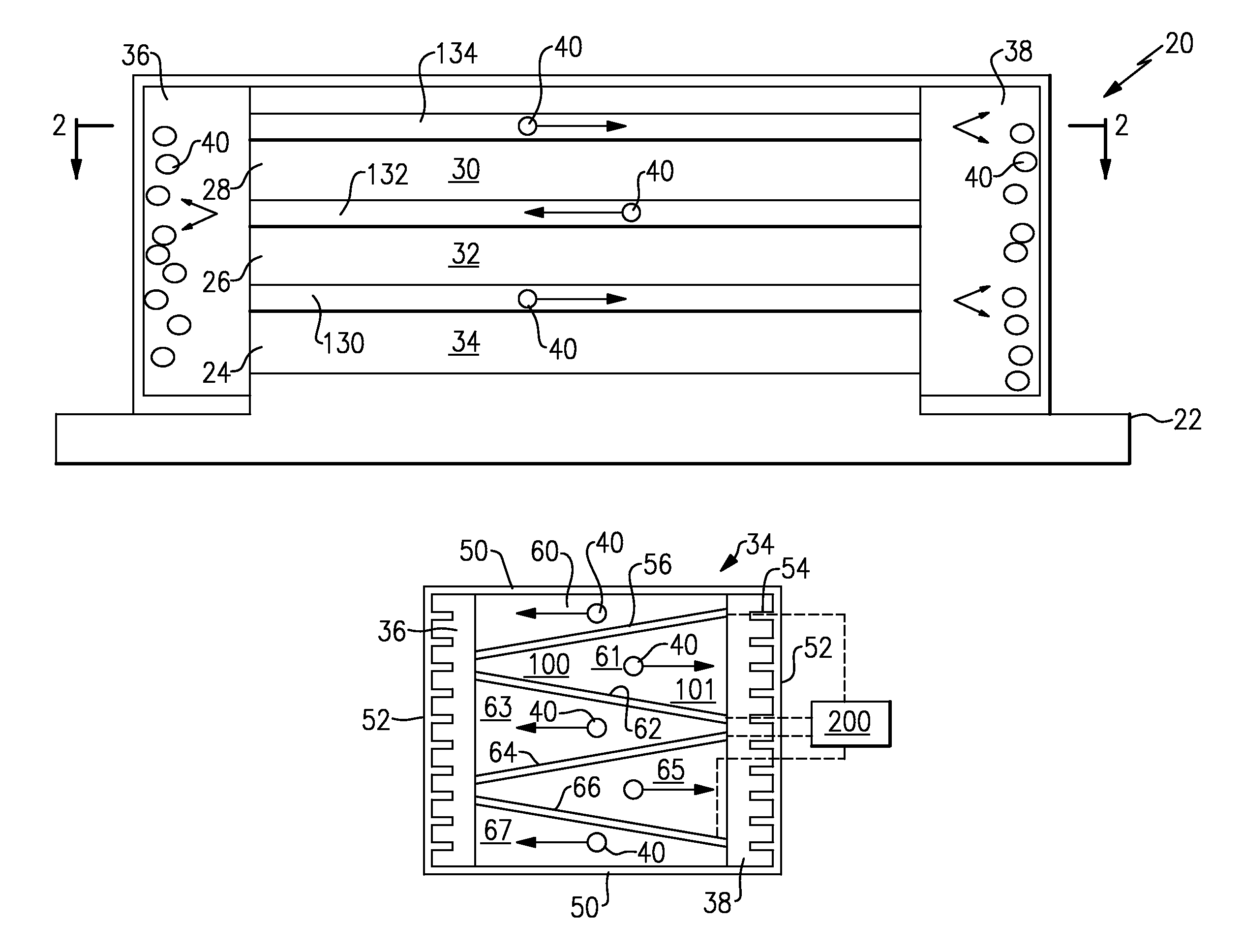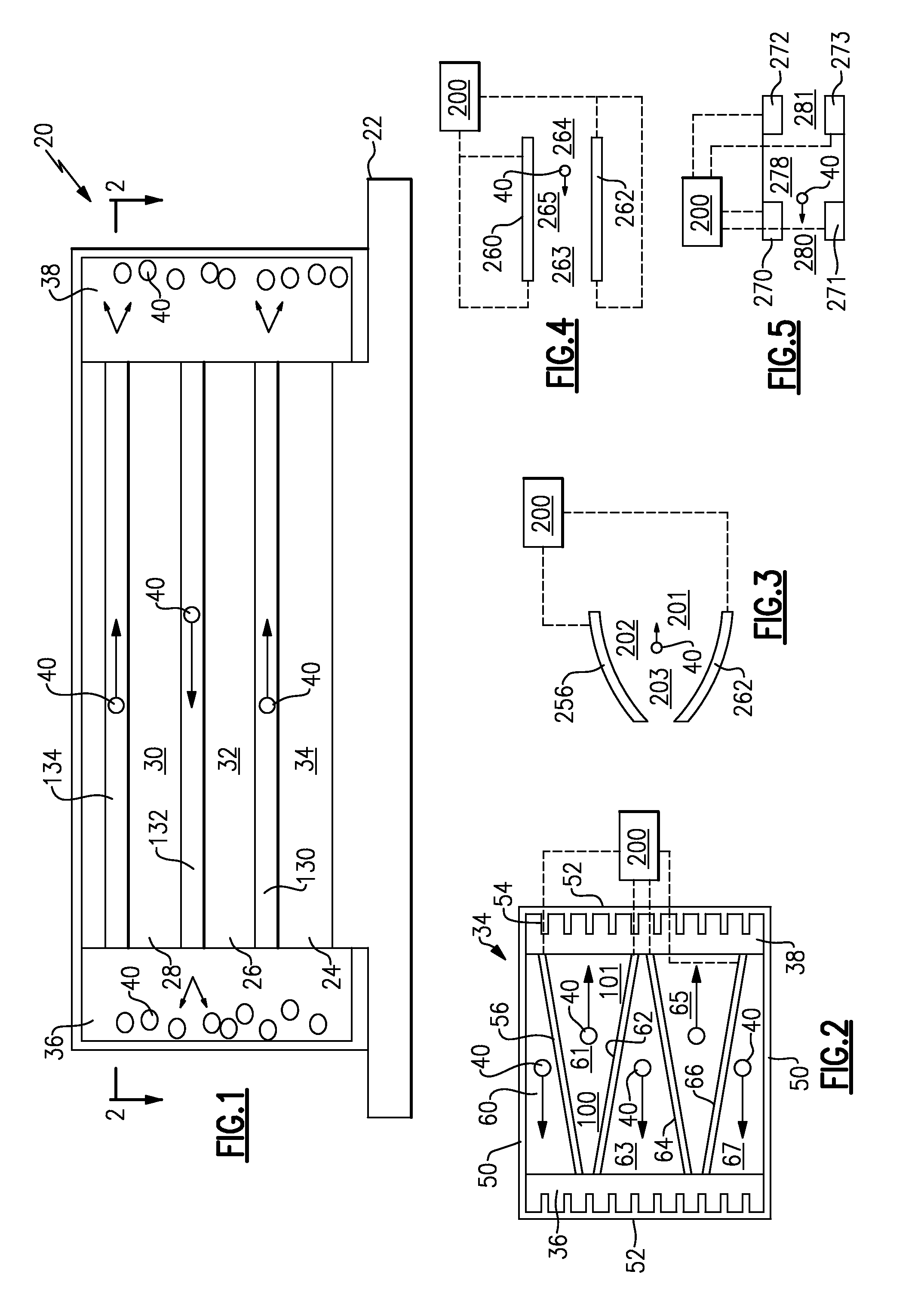Dielectrophoretic cooling solution for electronics
a cooling solution and electronics technology, applied in the direction of electrical equipment, lighting and heating equipment, instruments, etc., can solve the problems of increasing the heat flux generated by electronic devices, and increasing the cost of passive cooling
- Summary
- Abstract
- Description
- Claims
- Application Information
AI Technical Summary
Benefits of technology
Problems solved by technology
Method used
Image
Examples
Embodiment Construction
[0013]FIG. 1 shows a stack 20 that mounts a plurality of electronic controls or cores 30, 32 and 34. On the other hand, this application would extend to a single cooling layer cooling a single control element. As disclosed, these may be electronic control elements, such as central processing units or power controllers, or any other component that requires cooling. The cores 30, 32, 34 are all generally planar.
[0014]Micro-channel cooling channels are defined at 130, 132 and 134, and intermediate the cores 30, 32, and 34. In a sense, the channels 130, 132, 134 and cores 30, 32, 34 are stacked in a direction generally perpendicular to the planar shape of the cores 30, 32, 34. Of course, the cores 30, 32, 34 are not actually planar.
[0015]End plenums 36 and 38 are defined at axial ends of the cooling channels 130, 132 and 134. A cold plate 22 is placed adjacent a lower most one of the cores 24, and operates to tap heat away. Another type heat sink can replace cold plate 22.
[0016]As shown...
PUM
 Login to View More
Login to View More Abstract
Description
Claims
Application Information
 Login to View More
Login to View More - R&D
- Intellectual Property
- Life Sciences
- Materials
- Tech Scout
- Unparalleled Data Quality
- Higher Quality Content
- 60% Fewer Hallucinations
Browse by: Latest US Patents, China's latest patents, Technical Efficacy Thesaurus, Application Domain, Technology Topic, Popular Technical Reports.
© 2025 PatSnap. All rights reserved.Legal|Privacy policy|Modern Slavery Act Transparency Statement|Sitemap|About US| Contact US: help@patsnap.com


